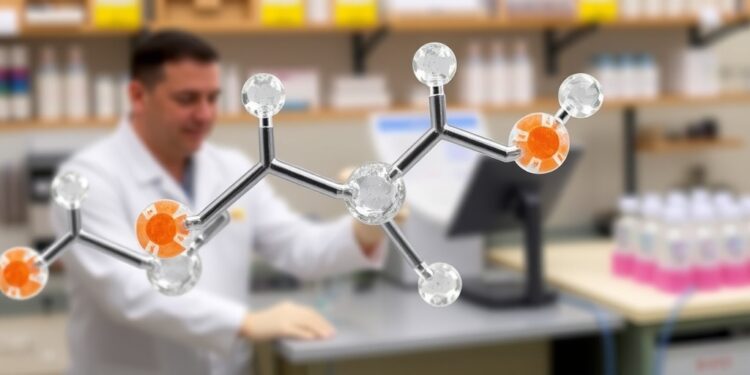Researchers at the National University of Singapore (NUS) have made significant strides in drug synthesis with the introduction of a groundbreaking catalytic transformation that converts epoxides into fluorinated oxetanes. These compounds have long been revered in the pharmaceutical industry due to their rare but desirable properties. This transformative process opens new avenues for the synthesis of drug molecules that have evaded chemists for decades, primarily due to the intricacies involved in their preparation. By developing a novel methodology, the research team is on the brink of potentially revolutionizing drug discovery applications.
Despite the rich structural diversity of four-membered heterocycles, such as oxetanes and β-lactones, their synthesis remains a challenging endeavor within organic chemistry. Not only are these compounds abundant in natural products, but they also play crucial roles in medicinal chemistry. Their unique features, particularly when fluorine is introduced into the molecular framework, often enhance the pharmacological effectiveness of the compounds they are part of. While the inclusion of fluorine can augment biological activity, achieving this has been a complex puzzle for the scientific community—until now.
The research team, led by Associate Professor Koh Ming Joo from NUS’s Department of Chemistry, alongside experts from the Department of Pharmacy and Pharmaceutical Sciences, embarked on this journey to engineer a solution. Their collaboration included contributions from Professor Eric Chan and Professor Liu Peng, who offered insights from their respective fields. Their collective expertise laid the groundwork for what would culminate in a notable research outcome published in the prestigious journal Nature Chemistry in February 2025.
A vivid demonstration of the practical utility of this transformation came when the researchers succeeded in synthesizing fluorine-containing analogues of compounds familiar to medicinal chemists. For instance, creating analogues of oxetane, β-lactone, and carbonyl pharmacophores seldom tackled previously holds promise for the pharmaceutical industry. This pioneering work represents not just a technical achievement, but a significant leap towards enhancing our medicinal toolkit, fostering better drug design, and potentially leading to breakthroughs in treating previously futile-to-address diseases.
Prof. Liu’s computational studies complemented the experimental work, providing a deeper understanding of the reactivity involved and unveiling new mechanisms that elucidate these novel chemical transformations. This multifaceted approach showcases the strength that interdisciplinary collaboration can bring to scientific inquiry. In tandem with investigations led by Prof. Chan focusing on lipophilicity and metabolic stability, this body of research substantiates the potential role of fluorinated oxetanes as critical scaffolds in the realm of drug discovery.
As these researchers venture further into this uncharted territory, they are undertaking crucial studies to assess the biological properties of these novel compounds. The ongoing work aims to extend this methodology beyond fluorinated oxetanes to other classes of heterocyclic compounds that show promise as drug-like entities. This trajectory suggests an expansive horizon where chemistry serves not just as a foundational discipline but as a transformative force in medicine.
The implications of this research are far-reaching. By addressing the limitations imposed by traditional synthetic routes, the development of this catalytic methodology offers a reliable and efficient pathway to synthesizing previously inaccessible compounds. This prospective ability to design and create new small-molecule therapeutics could lead to the innovation of medications tailored specifically for the treatment of various diseases, possibly charting pathways to solutions in areas where conventional remedies have stalled or become ineffectual.
In a statement reflecting the enthusiasm and relevance of their work, Assoc Prof Koh captured the essence of their research: “By inventing a reliable route to fluorine-containing oxetanes, we can now incorporate these motifs into the design of novel small-molecule therapeutics. This opens up exciting opportunities to develop new medicines that could potentially treat previously incurable diseases.” His statement encapsulates the optimism that surrounds this transformative research, highlighting its potential impact on the future of medicinal chemistry.
With ongoing studies reinforcing the utility of their findings, the researchers are poised to unlock even further innovations within the field of drug discovery. As excitement mounts within the scientific community, the legacy of this research could well inspire future generations of chemists to tackle the complex challenges inherent to drug synthesis and development.
This novel approach to manipulating chemical structures, grounded in practical applicability and theoretical insights, serves not just an academic function but stands on the threshold of real-world application. The possibilities it opens are not merely theoretical; they hold promise to reshape pharmacotherapeutic strategies and enhance health outcomes for patients facing challenging medical conditions.
As we witness the fruits of overhauling traditional methods of pharmaceutical synthesis, this research serves as a beacon of inspiration—a call to action for chemists worldwide to pursue innovative prospects with renewed vigor and imagination.
Subject of Research: Not applicable
Article Title: Catalytic difluorocarbene insertion enables access to fluorinated oxetane isosteres
News Publication Date: 20-Feb-2025
Web References: Journal Article
References: DOI: 10.1038/s41557-024-01730-7
Image Credits: Credit: National University of Singapore
Keywords
Medicinal chemistry; Drug discovery; Discovery research; Drug design; Scientific method; Catalysis; Pharmaceuticals
Tags: catalytic transformation in drug synthesischallenges in organic chemistryenhancing pharmacological effectivenessepoxides to fluorinated oxetanesfluorinated drug compoundsfluorine in drug designfour-membered heterocycles synthesisNational University of Singapore researchnovel drug discovery methodologiesoxetanes in medicinal chemistrypharmaceutical industry advancementsrevolutionary drug synthesis techniques





